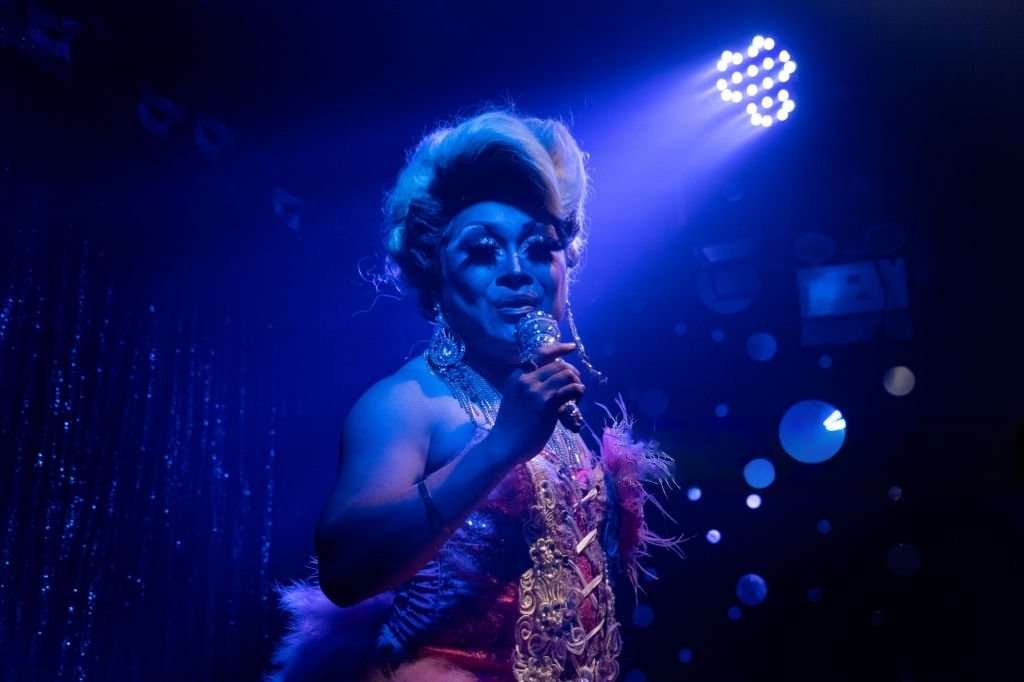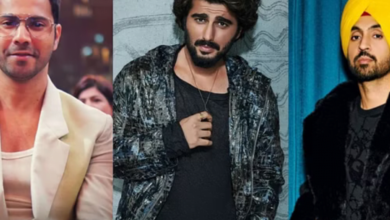Cross-dressing in India: A Rich and Diverse History

Cross-dressing in India
What is crossdressing?
CrossDressing means wearing clothing typically associated with the opposite gender. For example, if a person assigned male at birth wears clothing traditionally considered for females, like dresses or makeup, they are CrossDressing. It’s important to know that CrossDressing is a own choice and doesn’t need to point out a person’s gender identity or sexual gender. It’s a way people express themselves. understanding and respect for individual choices is important.
Why is crossdressing interesting now days?
CrossDressing can be interesting to different people for various reasons:
Exploration of Identity: Some individuals may use CrossDressing as a way to explore or express different aspects of their gender identity or presentation.
Artistic Expression: In theater, film, or performance art, CrossDressing can be used to convey a character or make a statement, and this can be intriguing from a creative perspective.
Breaking Gender Norms: Crossdressing challenges ideas about what men and women “should” wear, which can be thought-annoying and lead to discussions about gender roles and trust.
Personal Comfort: For some, the clothing typically associated with the opposite gender may feel more comfortable or align better with their personal style.
Historical and Cultural Significance in 2023: CrossDressing has played a role in many cultures and historical situation, and understanding this can provide insight into different societies and time periods.
Empathy and Understanding: Learning about CrossDressing can foster empathy and a better understanding of the experiences of people whose gender expression may differ from societal norms.
It’s important to reah CrossDressing with respect and an open mind, as it’s a personal choice and can hold different meanings for different person.
How does CrossDressing relate to Indian culture in today world?
CrossDressing has a historical and cultural significance in various parts of India in 2023. Here are some ways it relates to Indian culture in 2023:
Traditional Performances in 2023: In certain Indian performing arts, such as Kathakali in Kerala and Yakshagana in Karnataka, male performers traditionally portray female characters. This practice has deep roots in Indian classical dance and theater.
Religious and Mythological Contexts: In Hindu mythology, there are instances of deities taking on different genders or disguising themselves as the opposite gender. For example, Lord Vishnu took the form of Mohini, a female, in the churning of the ocean episode.
Festivals and Celebrations: Some Indian festivals, like Navaratri in Gujarat, involve men dressing as women to perform traditional dances. This is seen as a form of devotion and is considered culturally significant.
Historical Figures: There are historical accounts of individuals in India who lived as eunuchs or adopted gender-nonconforming roles. Some, like Hijras, have a distinct cultural and social role in Indian society.
Contemporary Perspectives: In modern India, attitudes towards CrossDressing vary widely. While some people view it with acceptance or indifference, others may hold more conservative views. India has also seen a growing camp support for LGBTQ+ rights, including the rights of Every human beign on earth.
It’s important to note that India is a diverse country with many cultures, languages, and traditions, so attitudes towards CrossDressing can vary significantly from one region to another. in-Addition People of the society views are changing over time.
What are some challenges faced by CrossDressers in India?
CrossDressers in India, like in many other parts of the world, may face various challenges. Here are some of them:
Social Stigma and Discrimination: CrossDressing can be stigmatized in Indian society, leading to prejudice, discrimination, and even verbal or physical abuse.
Lack of Legal Protections: While the rights of transgender individuals have been recognized in India, CrossDressers may not have specific legal protections, which can leave them vulnerable to discrimination.
Family Rejection: Some CrossDressers face rejection or lack of understanding from their families, which can lead to strained relationships and a lack of support.
Employment Discrimination: CrossDressers may face challenges in the workplace, including discrimination in hiring, promotions, or day-to-day treatment by colleagues.
Limited Access to Healthcare: Finding healthcare providers who are knowledgeable and sensitive to the needs of CrossDressers can be difficult, which may hinder access to necessary medical services.
Lack of Social Support Networks: Building a supportive community can be challenging, especially in more conservative areas or communities where CrossDressing is not widely accepted.
Violence and Harassment: Some CrossDressers may be at risk of violence or harassment, both in public spaces and within their own communities.
Legal Documentation and Identification: Obtaining identification documents that align with their gender expression can be a bureaucratic and often difficult process for CrossDressers .
Mental Health Challenges: Dealing with societal stigma and discrimination can take a toll on mental health, leading to anxiety, depression, or other mental health issues.
It’s important to note that beliefs towards CrossDressing vary across India, and progress is being made in terms of recognizing the rights and dignity of transgender.

What are some of the CrossDressing stories from India?
There are several notable CrossDressing stories and characters in Indian literature and cinema. Here are a few:
“Lajja” by Taslima Nasrin: While not specifically about CrossDressing, this novel addresses issues related to gender and societal expectations. It plays the challenges faced by women in a society.
“Dil Bole Hadippa!” (2009): This Bollywood film features a female protagonist who dress herself as a man to join a cricket team. The movie explores themes of gender, identity, and breaking patterns.
“Ardh Satya” (1983): In this critically acclaimed film, a police officer, played by Om Puri, disguises himself as a woman to catch a criminal. The movie shows into complex issues of power, identity, and social justice.
“Gandu” (2010): This Indian film directed by Qaushiq Mukherjee (Q) features a character named Rik who occasionally cross-dresses. The film is known for its bold and unconventional themes.
“Criminal Psychologist” by Dr. Anuja Kapur: This book, authored by a renowned criminal psychologist, explores the mindsets and behaviors of criminals, including those who may engage in CrossDressing.
“Sangathalaivan” (1972): This Tamil film revolves around a protagonist who cross-dresses for a mission. It touches on themes of disguise, deception, and societal expectations.
Remember that CrossDressing is a complex and diverse aspect of human experience, and its portrayal in stories can vary widely. These examples offer a range of perspectives and contexts related to CrossDressing within Indian literature and cinema.
History of CrossDressing in India
CrossDressing, or the act of wearing clothing typically associated with a gender different from one’s assigned sex, has a complex and multifaceted history in India. Here are some key points in the history of CrossDressing in India:
Ancient Mythology and Epics: Indian mythology and epics contain stories of deities and mythical figures who temporarily took on the appearance or clothing of the opposite gender. For instance, Lord Vishnu transformed into Mohini, a female form, during the churning of the ocean to distribute the nectar of immortality.
Performing Arts: CrossDressing has been a traditional aspect of Indian performing arts. In various forms of classical dance and theater, male performers often portray female characters. For example, in Kathakali (Kerala) and Yakshagana (Karnataka), male artists wear elaborate costumes and makeup to portray female roles.
Religious and cultural aspects of CrossDressing in India
In India, CrossDressing has religious and cultural significance in various contexts:
Religious Mythology and Epics:
Hindu mythology features instances of deities assuming different genders or disguising themselves. For example, Lord Vishnu transformed into Mohini, a female form, during the churning of the ocean.
In some stories, Lord Shiva is depicted as Ardhanarishvara, a deity with both male and female aspects, representing the unity of opposites.
Performing Arts:
CrossDressing is an integral part of Indian performing arts. In Kathakali (Kerala), male performers don elaborate costumes and makeup to portray female characters. Similarly, Yakshagana (Karnataka) features male artists in female roles.
Devotional Practices:
In certain Hindu and Sufi traditions, devotees may engage in practices involving CrossDressing as an expression of devotion or spiritual commitment. This is often seen as a way to transcend conventional gender boundaries.
Eunuchs and Hijras:
The Hijra community, which includes eunuchs and transgender individuals, has a distinct cultural and religious role in Indian society. They are often associated with certain Hindu goddesses and have traditional roles in ceremonies, especially those related to childbirth and blessings.
Festivals and Rituals:
Some Indian festivals involve men dressing as women for traditional dances or performances. This can be a form of reverence or homage to particular deities.
Gender Fluidity in Mythical Beings:
Some regional myths feature gender-fluid or hermaphroditic beings, such as the Ardhanarishvara mentioned earlier. These beings challenge conventional notions of gender and reflect a broader acceptance of diverse gender expressions.
Transcendent Gender in Bhakti and Sufi Poetry:
Bhakti and Sufi poets sometimes use metaphors of CrossDressing to convey spiritual ideas. The idea of becoming the “beloved” in a spiritual sense transcends traditional gender roles.
Modern Interpretations:
In contemporary times, some LGBTQ+ individuals in India may draw inspiration from these religious and cultural elements to affirm their own identities.
CrossDressing in Indian Popular Culture:
Television Shows and Dramas:
Indian television has occasionally featured characters who cross-dress for comedic or dramatic effect. These instances are often used to explore themes of disguise, mistaken identity, or societal expectations.
Reality TV and Talent Shows:
Some reality TV programs in India, particularly talent shows, have featured performers who engage in CrossDressing acts, showcasing their artistic expression and skill.
Fashion and Entertainment Events:
Fashion designers and performers in India sometimes incorporate elements of CrossDressing into their shows, challenging traditional gender norms and celebrating diversity in expression.
CrossDressing in Indian Literature:
Novels and Short Stories:
Some Indian authors have explored CrossDressing as a theme in their works. and express thier emotions very well and raised the identity.
Mythological and Folklore Interpretations:
Scholars and writers have examined the gender fluidity present in Indian mythology and folklore, offering interpretations that highlight the acceptance of diverse gender expressions.
CrossDressing in Indian Cinema:
Bollywood Films:
Bollywood has produced several movies where CrossDressing is a central theme. These films often use CrossDressing for comedic effect, but they can also delve into deeper explorations of identity and societal expectations.
Regional Cinema:
Films from various Indian states have also featured CrossDressing characters and storylines. Some regional films take a more serious approach in addressing the challenges and experiences of CrossDressers .
Personal Stories from Indian CrossDressers :
Memoirs and Autobiographies:
Some person who engage in CrossDressing have shared their personal experiences or autobiographies, providing insight into their journeys, challenges the faced.
Online Communities and Forums:
There are online platforms where Indian CrossDressers and gender-nonconforming individuals share their stories, offer support, and connect with like-minded individuals.
Advocacy and Activism:
Some Indian CrossDressers have become advocates for LGBTQ+ rights and visibility, sharing their stories to raise awareness and promote understanding.
It’s important to note that CrossDressing experiences can vary widely, and these representations may not capture the full spectrum of individual experiences within the Indian context. Additionally, societal attitudes and acceptance towards CrossDressing continue to evolve in India.
Conclusion: The Future of CrossDressing in India
The future of CrossDressing in India holds promise as societal attitudes continue to evolve. With increasing awareness, legal recognition, and advocacy efforts, CrossDressers are finding a more supportive environment.
Making India More Inclusive for CrossDressers :
Education and Awareness: Promote education about gender diversity in schools and communities to foster understanding and empathy towards CrossDressers .
Access to Healthcare: Ensure that CrossDressers have access to healthcare providers who are knowledgeable and sensitive to their unique needs.
Supportive Family and Community Networks: Encourage open dialogue within families and communities to promote acceptance and support for CrossDressers .
Representation in Media and Arts: Advocate for authentic and respectful representations of CrossDressers in literature, cinema, and other forms of media.
Additional Sections:
Glossary of Terms:
Provide definitions for terms related to CrossDressing, gender identity, and gender expression to promote understanding.
Resources for CrossDressers in India:
Compile a list of organizations, support groups, and online communities where CrossDressers can find information, guidance, and connect with others.
List of Indian CrossDressing Organizations:
Highlight organizations and advocacy groups working towards the rights and visibility of CrossDressers in India.
List of Indian CrossDressing Events:
Showcase events, workshops, and gatherings that celebrate and provide safe spaces for CrossDressers to express themselves.
Must watch video




